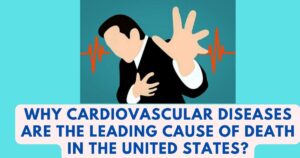Black/African American Health in the United States 2025
The health status of Black and African American populations in the United States reflects complex intersections of historical, social, economic, and environmental factors that create persistent health disparities across nearly every measurable health outcome. The Centers for Disease Control and Prevention (CDC) and Office of Minority Health track comprehensive health data revealing that Black/African Americans, representing 13.7% of the total U.S. population or approximately 39.6 million people as of 2023, experience disproportionate burdens of chronic disease, lower life expectancy, and reduced access to quality healthcare compared to white Americans and the general population. These disparities manifest across conditions including heart disease, diabetes, hypertension, obesity, maternal mortality, and infant mortality, with some health gaps widening rather than narrowing despite decades of public health interventions.
What distinguishes 2024-2025 health data is the comprehensive documentation of social determinants driving health inequities beyond purely medical factors. Black/African American households earn median incomes of $53,789 compared to $83,121 for non-Hispanic white households, with 16.9% of Black families experiencing poverty versus 5.9% of white families. Educational attainment gaps persist, with 26.2% of Black adults holding bachelor’s degrees compared to 40.0% of white adults. Healthcare access remains unequal, as 8.5% of Black Americans lack health insurance compared to 5.1% of whites, while 56.8% have private insurance versus 73.8% of whites. These non-medical drivers profoundly influence health outcomes, creating environments where even educated, employed Black Americans experience worse health outcomes than similarly situated whites, indicating systemic factors beyond individual behaviors shape population health disparities requiring comprehensive societal responses rather than healthcare interventions alone.
Key Black/African American Health Statistics 2025
| Health Indicator | Black/African American | Total U.S. Population | Disparity Ratio | Comparison |
|---|---|---|---|---|
| Life Expectancy (2023) | 74.0 years | 78.4 years | -4.4 years gap | Second lowest among racial groups |
| Female Life Expectancy | 77.6 years | 81.0 years | -3.4 years | Significant gap |
| Male Life Expectancy | 70.3 years | 75.8 years | -5.5 years | Larger disparity |
| Death Rate (per 100,000) | 910.8 | ~835 (total) | 1.09x higher | Elevated mortality |
| Infant Mortality (per 1,000) | 10.93 | 5.6 (total) | 1.95x higher | Nearly double national rate |
| Adults in Fair/Poor Health | 20.1% (2024) | ~12% (total) | 1.68x higher | Worse self-reported health |
| Hypertension Prevalence | 34.5% (2024) | 27.3% | 1.26x higher | 26% more diagnoses |
| Diabetes Diagnosis | 24% higher than total | Baseline | 1.24x | Substantial disparity |
Data Sources: CDC National Center for Health Statistics 2024; CDC FastStats Black/African American Health 2024; HHS Office of Minority Health 2024-2025
Black/African American health statistics for 2024-2025 reveal profound disparities affecting every life stage from birth through old age. The life expectancy of 74.0 years for Black Americans trails the national average by 4.4 years, representing hundreds of thousands of years of life lost annually across the Black population. This gap proves particularly stark for Black men, whose 70.3-year life expectancy falls 5.5 years below the male national average, while Black women at 77.6 years live 3.4 years less than average American women. Only American Indians and Alaska Natives experience lower life expectancy than Black Americans, placing the Black population as the second-most disadvantaged racial group for overall longevity despite comprising the nation’s second-largest racial minority population.
The infant mortality rate of 10.93 deaths per 1,000 live births represents one of the most troubling disparities, with Black infants dying at nearly double the national rate of 5.6 per 1,000. This means approximately 1 in 91 Black infants die before their first birthday compared to 1 in 179 infants nationally, translating to thousands of preventable Black infant deaths annually. The death rate of 910.8 per 100,000 population indicates Black Americans experience approximately 9% higher overall mortality than the general population. Chronic disease prevalence drives much of this mortality gap: 34.5% of Black adults have diagnosed hypertension compared to 27.3% nationally (26% more frequent), while diabetes diagnoses occur 24% more often among Black adults. Self-reported health status shows 20.1% of Black adults rate their health as fair or poor in 2024, substantially higher than general population rates around 12%, indicating both objective health problems and potentially reduced healthcare access affecting health maintenance. These statistics compiled from official CDC and HHS sources document systematic health disadvantages affecting Black Americans across all major health indicators, requiring urgent public health attention and policy interventions addressing root causes of health inequity.
Life Expectancy and Mortality Rates 2025
| Life Expectancy Metric | Black/African American | White (non-Hispanic) | Asian American | Hispanic/Latino | Gap Analysis |
|---|---|---|---|---|---|
| Overall Life Expectancy (2023) | 74.0 years | 78.8 years | 85.2 years | 81.3 years | -4.8 years vs. white |
| Female Life Expectancy | 77.6 years | 81.5 years | 87.9 years | 84.3 years | -3.9 years vs. white |
| Male Life Expectancy | 70.3 years | 76.1 years | 82.5 years | 78.3 years | -5.8 years vs. white |
| 2022 Life Expectancy | 72.8 years | 77.5 years | 84.5 years | 80.0 years | Improving from 2022 |
| Leading Cause of Death | Heart disease | Heart disease | Heart disease | Heart disease | Same as general population |
| Second Leading Cause | Cancer | Cancer | Cancer | Cancer | Consistent pattern |
| Third Leading Cause | Accidents/Unintentional Injuries | Accidents | Stroke | Accidents | Injury burden |
Data Sources: CDC National Vital Statistics System 2023; CDC Life Expectancy Data 2024; HHS Office of Minority Health 2024
Life expectancy represents the single most comprehensive health outcome measure, and Black/African Americans experience the second-lowest life expectancy among all racial and ethnic groups in the United States. The 2023 life expectancy of 74.0 years reflects a modest improvement from 2022’s 72.8 years, suggesting partial recovery from pandemic-era mortality spikes that disproportionately affected Black communities. However, the 4.8-year gap compared to white Americans (78.8 years) and the staggering 11.2-year gap compared to Asian Americans (85.2 years) illustrate profound health inequities. Black men face particularly severe mortality risks, with their 70.3-year life expectancy falling 5.8 years below white men and an astonishing 12.2 years below Asian American men, differences so substantial they represent fundamental differences in survival probability throughout the lifespan.
The gender gap within Black populations mirrors but exceeds patterns in other groups. Black women outlive Black men by 7.3 years (77.6 vs. 70.3 years), a larger gap than the 5.4-year difference between white women and men. This suggests Black men face unique mortality risks, likely including higher rates of violence, occupational hazards, incarceration health impacts, and cardiovascular disease. Leading causes of death for Black Americans follow general population patterns—heart disease, cancer, and unintentional injuries—but Black Americans die from these conditions at younger average ages and higher rates. The stroke ranking higher among leading causes for Black Americans than for whites reflects the disproportionate hypertension burden discussed elsewhere. Historical context proves important: in 1900, Black life expectancy lagged white life expectancy by approximately 15 years; by 1960, this gap had narrowed to 7 years. The current 4.8-year gap represents progress but has stagnated since the 1980s, with no significant narrowing in recent decades despite advances in medicine and public health, indicating systemic barriers preventing Black Americans from accessing life-extending medical care and health-promoting environments at rates comparable to white Americans.
Heart Disease and Hypertension in Black Americans 2025
| Cardiovascular Metric | Black/African American | Total Population | Disparity Ratio | Impact |
|---|---|---|---|---|
| Hypertension Prevalence (2024) | 34.5% | 27.3% | 1.26x (26% higher) | One-third of Black adults |
| Male Hypertension (2017-2020) | 56.8% | ~47% | 1.21x higher | Majority of Black men |
| Female Hypertension (2017-2020) | 61.0% | ~49% | 1.24x higher | Majority of Black women |
| Blood Pressure Control | 13.2% | 16.1% | 0.82x (18% lower) | Poor management |
| Heart Disease Death Rate (2022) | 291.0 per 100,000 | 281.0 per 100,000 | 1.04x (4% higher) | Elevated mortality |
| Male Heart Disease Death Rate | 317.0 per 100,000 | 297.7 per 100,000 | 1.06x higher | Men particularly affected |
| Coronary Heart Disease Prevalence | 4.1% (2024) | 5.0% | 0.82x (18% lower) | Diagnosis paradox |
| High Cholesterol | 21.0% (2024) | 23.7% | 0.89x (11% lower) | Lower than average |
Data Sources: CDC Interactive Summary Health Statistics 2024; CDC National Vital Statistics Report 2024; HHS Office of Minority Health 2024
Cardiovascular disease represents the leading cause of death for Black Americans, with hypertension serving as a primary driver of this mortality burden. Hypertension affects 34.5% of Black adults in 2024, representing 26% more diagnoses than the general population rate of 27.3%. This means approximately one in three Black American adults has been diagnosed with high blood pressure, a condition that significantly increases risks of heart attack, stroke, kidney failure, and premature death. The gender-specific data from 2017-2020 reveals even more concerning patterns: 56.8% of Black men and 61.0% of Black women ages 20 and older have hypertension, meaning the majority of adult Black Americans suffer from this serious chronic condition. These rates substantially exceed corresponding rates in the general population by approximately 20-24%.
Beyond high prevalence, Black Americans with hypertension experience significantly worse blood pressure control compared to other hypertensive patients. Only 13.2% of Black adults with hypertension have their blood pressure under control, compared to 16.1% of all hypertensive adults—an 18% lower control rate. This management gap means Black hypertensive patients face higher risks of complications including stroke, heart attack, and kidney disease despite diagnosis and presumably treatment. The heart disease death rate of 291.0 per 100,000 for Black Americans exceeds the general population rate of 281.0, representing 4% higher mortality. Black men experience particularly elevated cardiac mortality at 317.0 per 100,000, 6% above the male population average. Paradoxically, diagnosed coronary heart disease prevalence appears lower among Black adults (4.1%) than the general population (5.0%), likely reflecting healthcare access barriers leading to underdiagnosis rather than truly lower disease burden. Similarly, high cholesterol rates appear lower (21.0% vs. 23.7%), though 92.8% of Black adults received cholesterol screenings within five years, suggesting adequate screening but potentially different cholesterol profiles or undertreatment. The hypertension crisis among Black Americans stems from multiple factors including dietary patterns high in sodium, elevated stress from discrimination and economic insecurity, lower physical activity rates, higher obesity prevalence, genetic factors affecting salt sensitivity, and reduced access to preventive healthcare and blood pressure monitoring.
Diabetes and Metabolic Health 2025
| Diabetes/Metabolic Indicator | Black/African American | Total Population/White | Disparity | Health Impact |
|---|---|---|---|---|
| Diabetes Diagnosis Frequency | 24% more frequent than total population | Baseline | 1.24x | Substantial disparity |
| End-Stage Renal Disease (2021) | 2.19x more often | Baseline | 119% higher | Kidney failure from diabetes |
| Male Obesity (2015-2018) | 38.7% | ~34% (total) | Higher | Elevated rates |
| Female Obesity (2015-2018) | 55.9% | ~40% (total) | 40% higher | Majority of Black women |
| Overall Obesity (2024) | 28% more likely | Baseline | 1.28x | Metabolic disease driver |
| Type 2 Diabetes Prevalence | ~15-16% (estimated) | ~10-11% | ~40-50% higher | Major chronic disease |
| Diabetes Complications | Higher amputation, blindness rates | Lower rates | Worse outcomes | Quality of life impact |
Data Sources: HHS Office of Minority Health Diabetes Data 2024; CDC Obesity Statistics 2024; National Institute of Diabetes and Digestive and Kidney Diseases 2024
Diabetes represents a major health crisis within Black/African American communities, with diagnosis frequency 24% higher than the general population as of 2024. This translates to approximately 15-16% of Black adults living with diabetes compared to roughly 10-11% of the general adult population, meaning Black Americans face nearly 1.5 times the diabetes risk. The consequences of this disparity extend beyond diagnosis to more severe complications. Black Americans with diabetes experience end-stage renal disease 2.19 times more often than the general population, meaning kidney failure requiring dialysis or transplant occurs at more than double the rate. This devastating complication dramatically reduces quality of life and life expectancy while imposing enormous medical costs and daily treatment burdens.
Obesity drives much of the diabetes disparity, as excess weight represents the primary modifiable risk factor for type 2 diabetes. Obesity affects 38.7% of Black men compared to approximately 34% of men overall, but the disparity proves especially stark for Black women: 55.9% of Black women experience obesity compared to roughly 40% of women generally. This means more than half of Black American women carry excess weight increasing their diabetes, heart disease, stroke, and cancer risks. Overall, Black adults are 28% more likely to be obese than the general population in 2024. The obesity-diabetes connection creates a vicious cycle where excess weight promotes insulin resistance leading to type 2 diabetes, while diabetes complications and medications can promote further weight gain. Black Americans with diabetes also experience higher rates of serious complications including lower limb amputations, blindness from diabetic retinopathy, cardiovascular disease, and premature death. The diabetes burden reflects complex causation: genetic factors may increase susceptibility, but environmental and social factors prove decisive. Food deserts in predominantly Black neighborhoods limit access to fresh produce and healthy foods while fast food saturates these areas; economic constraints make nutritious food less affordable; stress from discrimination and economic insecurity promotes cortisol elevation affecting metabolism; lower physical activity rates from lack of safe recreational spaces and long work commutes reduce calorie expenditure; and healthcare access barriers delay diagnosis and reduce quality of chronic disease management. Addressing the diabetes crisis requires comprehensive interventions targeting food access, physical activity infrastructure, stress reduction, and healthcare system reforms rather than individual behavior change alone.
Maternal and Infant Health Disparities 2025
| Maternal/Infant Health Metric | Black/African American | White (non-Hispanic) | Disparity Ratio | Outcomes |
|---|---|---|---|---|
| Infant Mortality Rate (2023) | 10.93 per 1,000 births | ~4.5 per 1,000 | 2.4x higher | Double+ the rate |
| Maternal Mortality Rate | ~50-55 per 100,000 (2021-2023) | ~20 per 100,000 | 2.5-2.8x higher | Preventable deaths |
| Births (2023) | 491,494 total | — | — | Annual births |
| Birth Rate (per 1,000 women 15-44) | 53.7 | ~55-58 | Comparable | Similar fertility |
| Preterm Birth Rate | 14-15% | ~9% | 1.5-1.7x higher | Complications risk |
| Low Birth Weight | 14-15% | ~7% | 2x higher | Health impacts |
| Prenatal Care Access | Lower first trimester entry | Higher early access | Delayed care | Access barrier |
| C-Section Rate | ~35-36% | ~32% | Slightly higher | Surgical delivery |
Data Sources: CDC FastStats Black Health 2024; CDC Infant Mortality Data 2023; CDC Maternal Mortality Statistics 2024; March of Dimes 2024
Maternal and infant health disparities represent perhaps the most morally urgent health inequities facing Black Americans, as they affect the most vulnerable and occur during what should be joyful life transitions. The infant mortality rate of 10.93 deaths per 1,000 live births means approximately 1 in 91 Black infants die before their first birthday, compared to roughly 1 in 222 white infants (4.5 per 1,000). This 2.4-fold disparity translates to over 2,500 excess Black infant deaths annually that would not occur if Black infants died at white infant rates. Leading causes of Black infant mortality include preterm birth complications, sudden infant death syndrome (SIDS), birth defects, maternal pregnancy complications, and unintentional injuries. Many of these deaths are preventable with adequate prenatal care, maternal health optimization, safe sleep education, and post-natal support.
Maternal mortality proves equally alarming, with Black women dying from pregnancy-related causes at 2.5-2.8 times the rate of white women. Estimates place Black maternal mortality around 50-55 deaths per 100,000 live births compared to approximately 20 per 100,000 for white women, though exact rates fluctuate year-to-year based on small numbers. This means Black women face nearly triple the pregnancy death risk of white women, even after controlling for education and income levels—college-educated Black women experience maternal mortality rates similar to white women without high school diplomas. Leading causes include hemorrhage, cardiovascular complications, infection, hypertension/eclampsia, and embolism. Preterm birth affects 14-15% of Black births versus 9% of white births, a 50-70% higher rate. Premature babies face elevated risks of death, developmental disabilities, chronic health problems, and high medical costs. Low birth weight similarly affects 14-15% of Black infants compared to 7% of white infants, doubling disadvantage from the start of life. These disparities persist across income and education levels, suggesting systemic racism—implicit bias in medical care, chronic stress from discrimination, environmental exposures in segregated neighborhoods, and historical medical exploitation creating healthcare mistrust—contributes substantially beyond socioeconomic factors. Addressing maternal-infant health inequities requires diversifying healthcare workforces, implementing implicit bias training, expanding Medicaid coverage for postpartum care, increasing doula and midwife utilization, and centering Black women’s voices in their medical care.
Cancer Incidence and Mortality 2025
| Cancer Metric | Black/African American | White (non-Hispanic) | Disparity | Survival/Outcomes |
|---|---|---|---|---|
| Overall Cancer Death Rate | Second leading cause | Second leading cause | Similar ranking | High mortality |
| Prostate Cancer Incidence | ~70% higher than white men | Baseline | 1.7x | Most diagnosed cancer (men) |
| Prostate Cancer Mortality | ~2x higher than white men | Baseline | Double | Worse outcomes |
| Breast Cancer Mortality | ~40% higher than white women | Baseline | 1.4x | Despite lower incidence |
| Colorectal Cancer Incidence | ~20% higher | Baseline | 1.2x | Elevated risk |
| Lung Cancer Mortality | Higher despite lower smoking | Lower mortality | Paradox | Worse outcomes |
| Cancer Screening Rates | Lower for some cancers | Higher screening | Access gap | Delayed diagnosis |
| 5-Year Survival Rates | Lower across most cancers | Higher survival | Disparity | Outcomes gap |
Data Sources: American Cancer Society Cancer Facts 2024; National Cancer Institute SEER Data 2024; CDC Cancer Statistics 2024
Cancer ranks as the second-leading cause of death for Black Americans behind heart disease, with mortality patterns revealing significant racial disparities in both incidence and survival. Prostate cancer affects Black men at extraordinarily disproportionate rates, with incidence approximately 70% higher than white men and mortality rates approximately double those of white men. Black men develop prostate cancer at younger average ages and with more aggressive disease characteristics, creating a public health crisis requiring targeted screening and treatment protocols for this high-risk population. Experts recommend Black men begin prostate cancer screening discussions at age 40-45 rather than age 50 recommended for average-risk men, though debates continue about screening benefits versus harms.
Breast cancer presents a survival paradox: Black women have slightly lower breast cancer incidence than white women but 40% higher breast cancer mortality. This “mortality paradox” reflects multiple factors including more aggressive tumor biology (triple-negative breast cancer affects Black women more frequently), later-stage diagnosis due to reduced screening access and healthcare delays, lower likelihood of receiving guideline-concordant treatment, and potentially differential response to standard treatments. Colorectal cancer affects Black Americans at 20% higher rates than whites, with earlier onset ages requiring screening recommendations beginning at age 45 rather than 50 for average-risk individuals. Lung cancer mortality remains elevated for Black Americans despite generally lower smoking rates than whites, suggesting environmental exposures, healthcare access barriers affecting early detection, or treatment disparities contribute to worse outcomes. Across most cancer types, Black Americans experience lower 5-year survival rates than whites diagnosed with the same cancers at the same stages, indicating systemic healthcare inequities affect treatment quality, access to clinical trials, supportive care, and follow-up monitoring. Cancer screening rates remain lower in Black communities for various cancers, contributing to later-stage diagnoses when treatment proves less effective. Addressing cancer disparities requires culturally competent outreach increasing screening, diversifying oncology workforces, expanding insurance coverage, increasing clinical trial participation among Black patients, and researching whether differential tumor biology requires tailored treatment approaches for Black cancer patients beyond current one-size-fits-all protocols.
Mental Health and Substance Use 2025
| Mental Health Indicator | Black/African American | Total Population | Context | Access/Treatment |
|---|---|---|---|---|
| Serious Psychological Distress | ~4-5% | ~3.5% | Slightly elevated | Underreported likely |
| Depression Diagnosis | Lower reported rates | Higher diagnosis | Underdiagnosis | Stigma barrier |
| Suicide Rates | Lower overall | Higher rates | Protective factors | But rising in youth |
| Youth Suicide (10-24) | Increasing rapidly | Varies | Alarming trend | Prevention needed |
| Mental Health Treatment | Lower utilization | Higher use | Access barrier | Cultural stigma |
| Current Cigarette Smoking (2024) | 10.8% | 10.8% | Equal to total | Declining rates |
| E-Cigarette Use | 5.1% | 6.5% | Lower than average | Vaping less common |
| Opioid Overdose Deaths | Rising rapidly | High overall | Crisis worsening | Fentanyl epidemic |
Data Sources: SAMHSA National Survey on Drug Use and Health 2024; CDC Mental Health Data 2024; HHS Office of Minority Health Mental Health Statistics 2024
Mental health disparities among Black Americans prove complex, with some protective factors coexisting alongside significant access barriers and emerging crises. Serious psychological distress affects approximately 4-5% of Black adults, slightly higher than the 3.5% general population rate, though many experts believe mental health conditions are underdiagnosed and underreported in Black communities due to cultural stigma, historical mistrust of medical systems, misdiagnosis of symptoms, and lack of culturally competent mental health providers. Depression diagnosis rates appear paradoxically lower among Black Americans than whites despite higher exposure to stressors including discrimination, economic hardship, and violence, suggesting systematic underdiagnosis rather than true lower prevalence.
Suicide rates have historically been lower among Black Americans compared to white Americans, with strong family ties, religious faith, and community connections serving as protective factors. However, youth suicide rates among Black adolescents and young adults ages 10-24 have increased dramatically in recent years, closing the historical gap and creating urgent concern about emerging mental health crises among Black youth. Mental health treatment utilization remains substantially lower among Black Americans than the general population, with barriers including limited insurance coverage, shortage of Black mental health providers, cultural stigma viewing mental illness as weakness or spiritual failure, distrust stemming from historical medical exploitation, and lack of culturally appropriate treatment modalities. Cigarette smoking rates among Black adults at 10.8% in 2024 match the general population rate, representing significant progress from earlier decades when Black smoking rates exceeded white rates. E-cigarette use remains lower among Black adults (5.1%) than the general population (6.5%). However, opioid overdose deaths have risen dramatically among Black Americans, with the fentanyl crisis driving increases in overdose mortality that threaten to reverse decades of progress in reducing substance-related deaths. Addressing mental health and substance use requires expanding culturally competent mental health services, increasing the Black mental health workforce, destigmatizing mental illness through community education, integrating mental health into primary care settings Black Americans already access, and expanding medication-assisted treatment for opioid use disorder combined with harm reduction services.
Healthcare Access and Insurance Coverage 2025
| Healthcare Access Metric | Black/African American | White (non-Hispanic) | Disparity | Impact |
|---|---|---|---|---|
| Uninsured Rate (Adults 18-64, 2024) | 10.5% | ~6-7% | 40-50% higher | Access barrier |
| Uninsured Rate (Children <18, 2024) | 2.7% | ~2-3% | Similar/slightly higher | Improved coverage |
| Private Insurance | 56.8% | 73.8% | 23% lower | Employer coverage gap |
| Medicaid/Public Insurance | 45.9% | 36.6% | 25% higher | Safety net reliance |
| Regular Healthcare Provider | Lower percentage | Higher percentage | Access gap | Continuity issues |
| Delayed Care Due to Cost | Higher rates | Lower rates | Financial barrier | Postponed treatment |
| Emergency Department Use | Higher utilization | Lower use | Primary care gap | Costlier care site |
| Preventive Care Access | Lower screening rates | Higher screening | Prevention gap | Late diagnosis |
Data Sources: CDC Interactive Summary Health Statistics 2024; U.S. Census Bureau American Community Survey 2023; Kaiser Family Foundation Health Insurance Data 2024
Healthcare access disparities fundamentally drive health outcome gaps, as even diagnosed conditions cannot be properly managed without consistent medical care. The uninsured rate of 10.5% for Black adults ages 18-64 in 2024 represents significant improvement from pre-Affordable Care Act rates exceeding 20%, but still leaves approximately 3.4 million working-age Black adults without health insurance compared to 6-7% of white adults lacking coverage. This 40-50% higher uninsured rate means Black Americans face greater barriers to preventive care, prescription medications, specialist referrals, and chronic disease management. Encouragingly, only 2.7% of Black children lack insurance in 2024, nearly achieving universal child coverage thanks to Medicaid/CHIP expansions.
The insurance type distribution reveals structural inequities: just 56.8% of Black Americans have private insurance (typically employer-sponsored) compared to 73.8% of whites, a massive 23-percentage-point gap reflecting Black workers’ concentration in lower-wage jobs less likely to offer health benefits. Conversely, 45.9% of Black Americans rely on Medicaid or other public insurance versus 36.6% of whites, indicating greater dependence on government safety-net programs. Even with insurance, Black Americans report higher rates of delaying or foregoing needed care due to cost, suggesting insurance quality differences (higher deductibles, narrower networks, greater cost-sharing) or financial constraints making even insured care unaffordable. Healthcare provider shortages in predominantly Black neighborhoods force longer travel distances, while implicit bias in medical settings creates uncomfortable or discriminatory experiences deterring Black patients from seeking care. Emergency department use runs higher among Black Americans, often reflecting lack of primary care access forcing reliance on emergency rooms for non-emergency conditions—a costlier, less effective care delivery model. Lower preventive screening rates for cancer, cardiovascular disease, and other conditions mean Black Americans’ diseases are diagnosed later at more advanced, harder-to-treat stages. Healthcare reform efforts must expand insurance coverage in states that haven’t adopted Medicaid expansion, improve insurance quality reducing cost-sharing barriers, increase healthcare workforce diversity, address implicit bias through training and accountability, and invest in community health centers serving predominantly Black neighborhoods to improve both access and cultural competency of care delivery.
Disclaimer: The data research report we present here is based on information found from various sources. We are not liable for any financial loss, errors, or damages of any kind that may result from the use of the information herein. We acknowledge that though we try to report accurately, we cannot verify the absolute facts of everything that has been represented.







